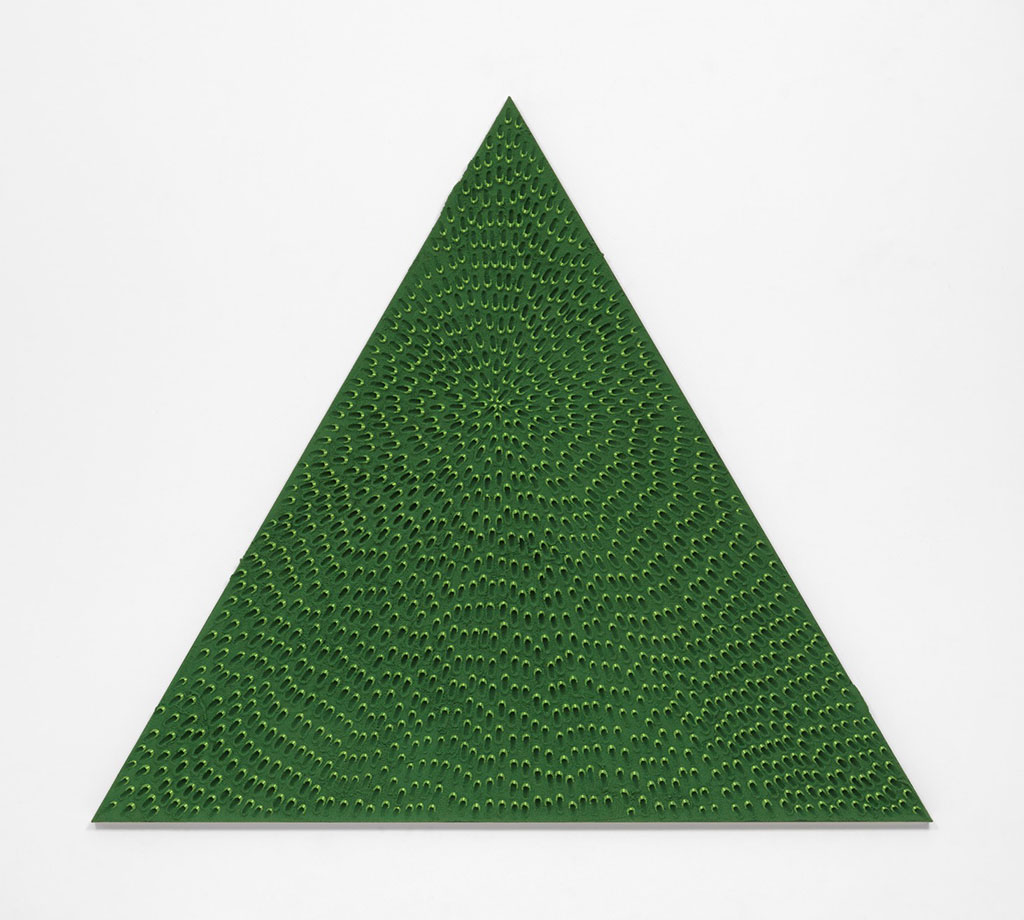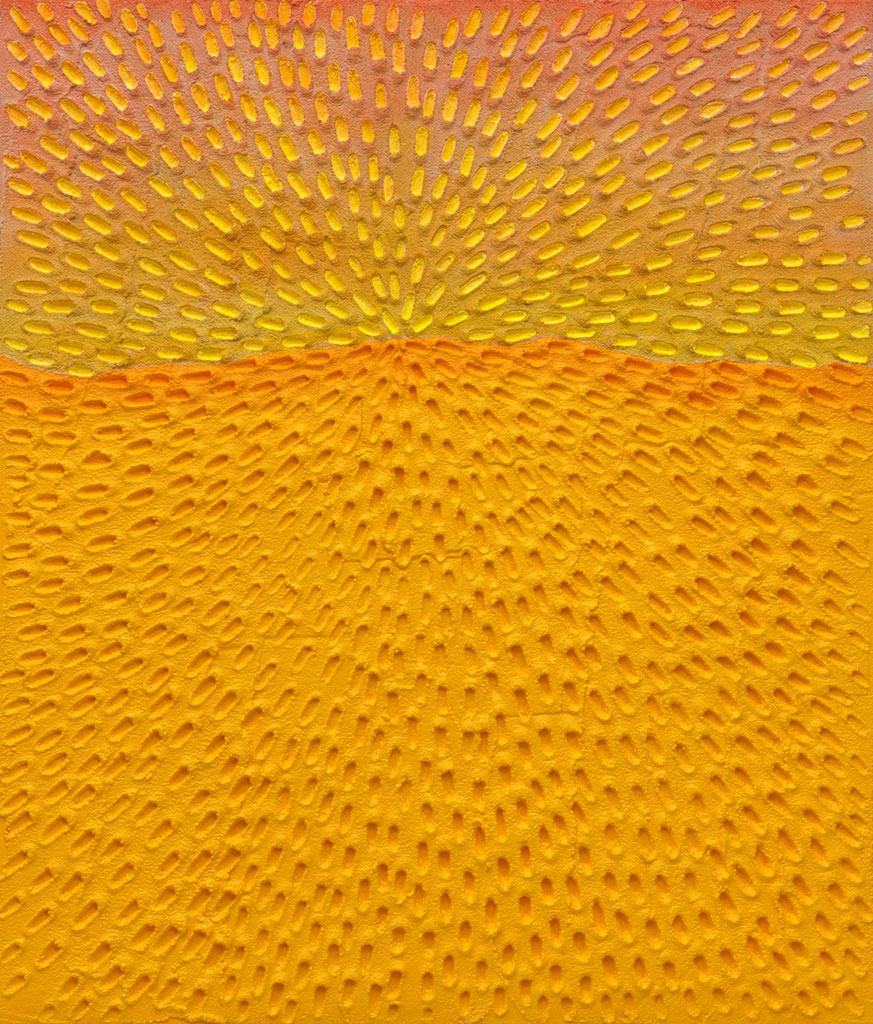ART-PREVIEW:Jennifer-Guidi Gemini
 Developing an absolutely personal technique, through the use of sand on canvas, Jennifer Guidi breaks up the distinction between painting and sculpture, combining research on gesture and color to create two-dimensional sculptures in which light and texture penetrate the material to reveal tonal effects and designs.Guidi’s mandala-like compositions, and the richness of her palette increasingly link her mode of abstraction to sensory experience of the natural world.
Developing an absolutely personal technique, through the use of sand on canvas, Jennifer Guidi breaks up the distinction between painting and sculpture, combining research on gesture and color to create two-dimensional sculptures in which light and texture penetrate the material to reveal tonal effects and designs.Guidi’s mandala-like compositions, and the richness of her palette increasingly link her mode of abstraction to sensory experience of the natural world.
By Dimitris Lempesis
Photo: Gagosian Archive

In her solo exhibition “Gemini”, Jennifer Guidi explores dualities: light and darkness, abstraction and figuration, science and mysticism. Viewers first encounter this focus in the twinned snakes of “To Protect and Hold You Up” (2019). Tracing links between cosmic and earthly forces, Guidi finds symmetry in opposition. In seven diptychs featuring triangular and circular canvases, the colors correspond to those of the chakras, a system of circular energy centers located in the body that inspires Guidi’s artistic and meditative practices alike. Also, on view are two horizontal landscapes, a sunset and a sunrise, also a triptych of bright yellow “painted universe mandala”. The underpaintings of the latter works are covered with marks that emanate from a central focal point positioned on the canvas to correspond with where the heart is located in the human body. In other works, Guidi re-creates two systems of 18th and 19th Century color theory: “Johann Wolfgang von Goethe’s triangle in “An Essential Order (Goethe)” (2019) and Ignaz Schiffermüller’s color circle in “Your Colors Are Eternal (Schiffermüller)” (2019). These paintings interpret illustrations by the German literary titan and the Austrian naturalist that visualize their shared belief in the profound effects of color and its impact on human emotion and behavior. Guidi’s paintings mix oil paint with sand to create surfaces oscillating between color and texture. Evolving from her earlier figurative paintings, the sand paintings reside delicately and elusively in between figuration and abstraction, evoking the traditions of landscape and naturalist painting yet evading all literal references. Guidi responds to nature and natural phenomena, often by rendering barely perceptible instances of movement and transitions from light to dark (and vice versa). With their luminous qualities and their textured relief, her paintings register and generate minute shifts in perception, echoing natural effects while creating their own sensory horizons. Beginning with an underpainting, Guidi applies a thick layer of sand to the painted surface while it is still wet. Then, she makes marks in the sand with a wooden dowel, in controlled and repetitive movements, often adding colored sand and paint along the edges of the rounded divots until the pattern is embedded onto the canvas in the manner of sedimentation or erosion. Guidi always begins with a lacuna placed deliberately to the left of dead center, mimicking the position of the heart within the body, and continuing outward in a radiant, centrifugal motion, like light permeating a landscape at dawn. Every painting is methodically brought to a state of harmony by this systematic yet organic process, connecting Guidi’s painting practice to strains of Minimalism that privilege attention to detail and repetition. Guidi’s expressive technique also reveals strong affinities with various non-Western practices in its intensely meditative patternmaking used to create imagery, narrative, or spiritual votiveness.
Info: Gagosian Gallery, 555 West 24th Street, New York, Duration: 28/2-4/4/20, Days & Hours: Mon-Sat 10:00-18:00, https://gagosian.com
![Jennifer Guidi, My Thoughts Emerge from a Mingling of Light and Darkness (Crown)[Detail], 2019, Sand, acrylic, and oil on linen, 294.6 × 248.9 cm, © Jennifer Guidi, Courtesy the artist and Gagosian](http://www.dreamideamachine.com/web/wp-content/uploads/2020/02/featuredImage-c0539328-6a66-41c2-a94b-e028155b5cfa.jpg)
